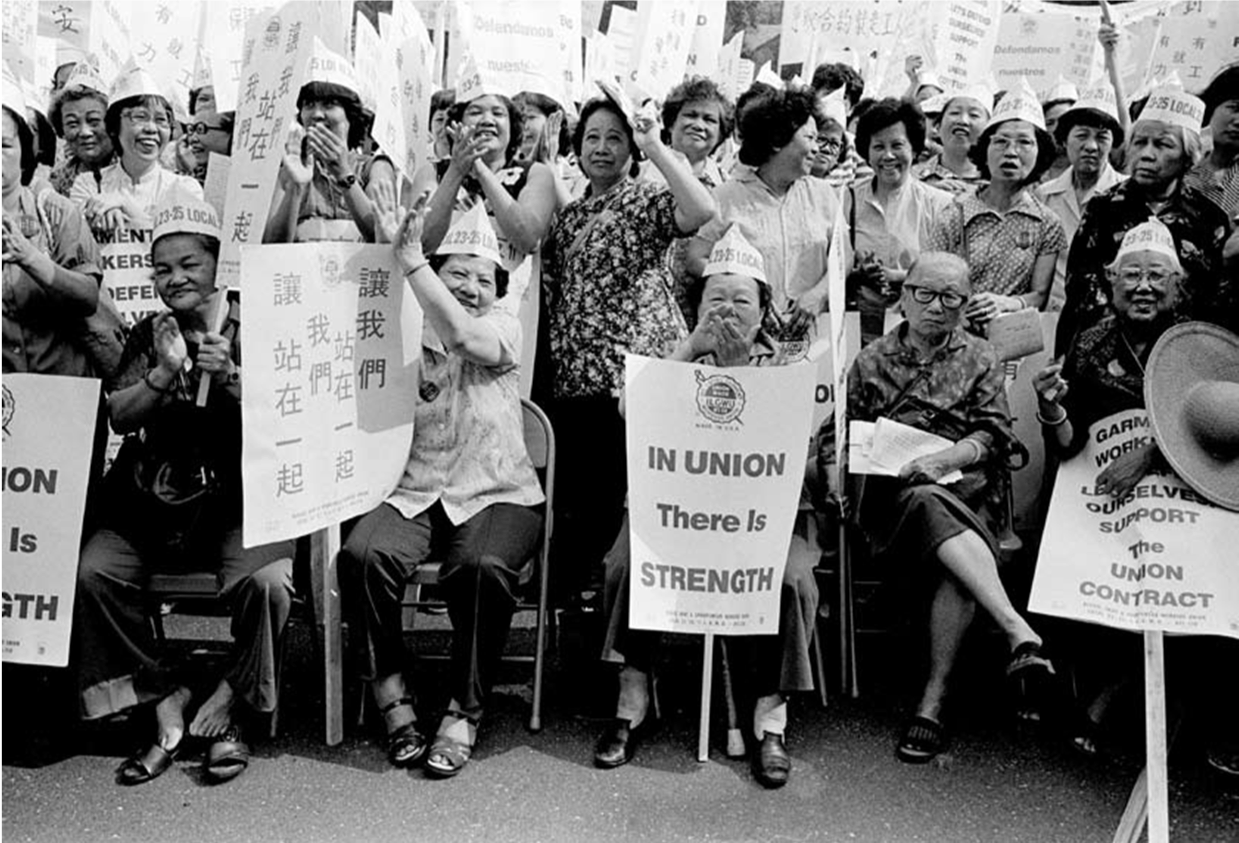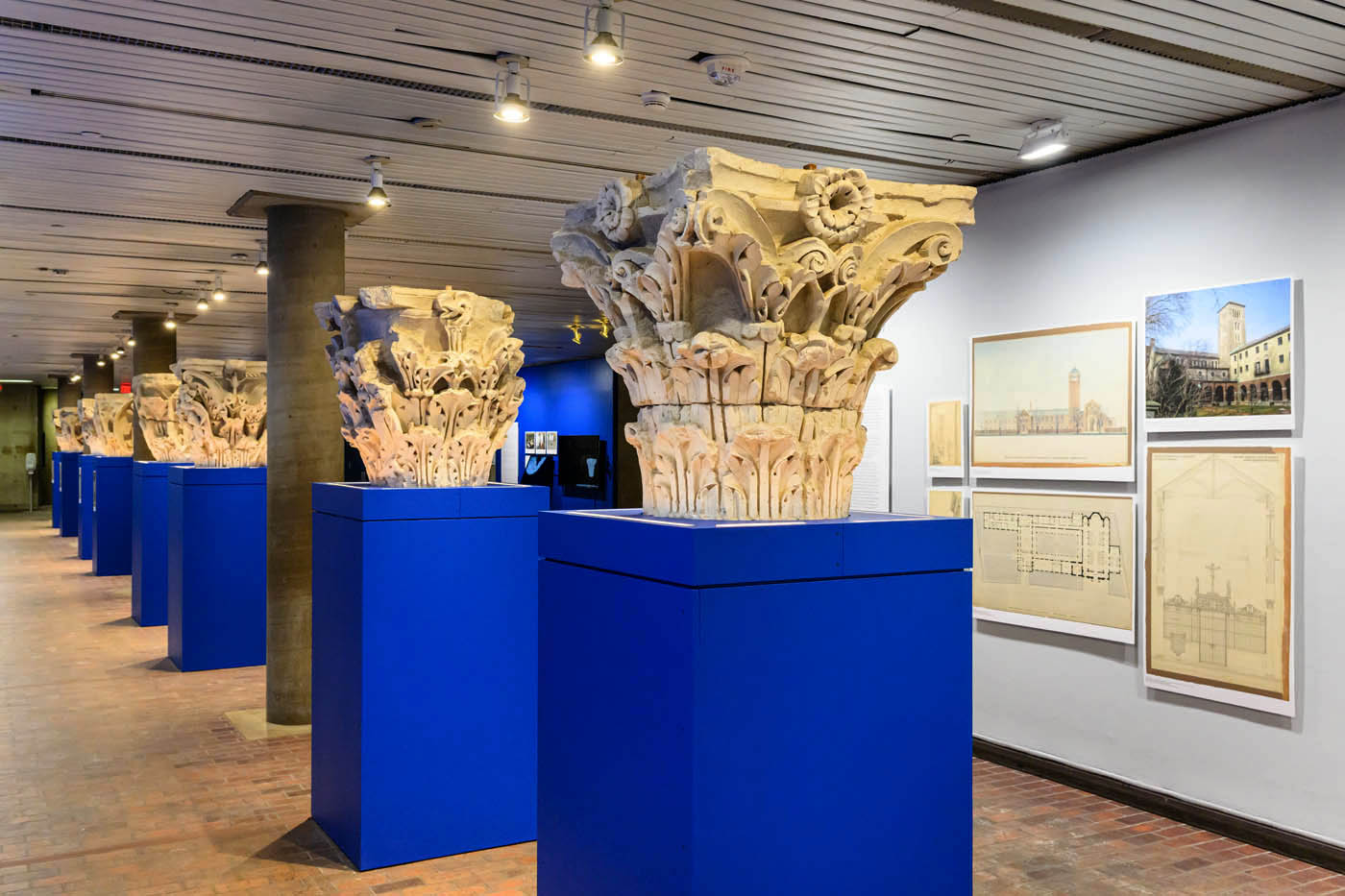Asian American women’s history is a tapestry woven from the threads of resilience, struggle, and unrecognized contributions. This largely invisible history has often been pushed to the margins, leaving vital narratives untold and their voices unheard. The Schlesinger Library exhibition, “Illuminate: Contextualizing Asian American Women’s Stories Through the Archives,” seeks to shed light on these historical narratives, showcasing artifacts that span over 150 years. From the 1904 St. Louis World’s Fair to contemporary archival collections, the exhibition captures the essence of Asian women’s contributions that have shaped American culture and society. By exploring these forgotten stories, we can better understand the complexities and richness of Asian American women’s experiences, ultimately enriching our collective identity and history.
The historical narrative surrounding women of Asian descent in America is marked by both visibility and erasure. Throughout the years, these women have played pivotal roles yet their stories are frequently overlooked or simplified. Recent efforts, such as the Schlesinger Library’s engaging exhibition, aim to highlight the experiences and journeys of Asian American females, unraveling the complex layers that define their past. This exhibit not only presents artifacts but also invites viewers to reflect on the impacts of historical injustices, including systematic marginalization, which have obscured their contributions to American society. Recognizing Asian women’s influence is essential to achieving a more inclusive understanding of America’s diverse heritage.
Unveiling Asian American Women’s Contributions
The Schlesinger Library’s exhibition, “Illuminate: Contextualizing Asian American Women’s Stories Through the Archives,” pushes the boundaries of historical narratives by shedding light on the largely overlooked contributions of Asian American women. This exhibition serves as a crucial reminder that the complex stories of these women must be recognized and celebrated. Through artifacts, personal accounts, and visual displays, visitors are invited to explore the multifaceted roles of Asian American women, not only as passive subjects of historical curiosity but as powerful agents of change in their communities.
Asian American women’s contributions have often been relegated to the sidelines of history, a phenomenon termed “invisible history.” For instance, the photographs of Ainu and Visayan women showcased at the exhibition illustrate how these women were commodified and displayed as curiosities during the 1904 St. Louis World’s Fair. This not only reflects a colonial mindset but also emphasizes the need for a more comprehensive understanding of history that includes voices and experiences that have been previously ignored.
The Role of Archives in Resourcing Historical Narratives
Archives play a significant role in preserving the history of Asian American women, serving as vital resources for researchers and educators alike. The partnership between the Schlesinger Library and American History courses has allowed students to delve into these often-overlooked narratives actively. By utilizing primary sources, these students are reshaping the historical discourse surrounding Asian women’s contributions, acknowledging their vital roles depicted in various contexts—be it social, political, or cultural.
Despite the challenges of surmounting a historical erasure, archivists and scholars are dedicatedly unearthing narratives that enrich our understanding of the past. The untold stories of pioneers like Ah Fong, who challenged immigration laws, exemplify how archival research can reveal significant yet overlooked events in Asian American women’s history. This not only enriches the historical narrative but also empowers current and future generations to learn from and honor these women’s legacies.
As Betts points out, understanding the past is critical to recognizing the present and shaping a more equitable future. The Schlesinger Library’s commitment to expanding collections related to Asian American women enables a broader dialogue about race, identity, and belonging within the tapestry of American history.
Exploring the Impact of Social Activism
Asian American women have historically been at the forefront of social activism, challenging injustices and fighting for their rights. The exhibition underlines this point by showcasing how these women have organized against racial discrimination, gender inequality, and civil rights violations throughout different eras. Their active participation in movements ranging from the Chinese Exclusion Act protests to more contemporary responses against anti-Asian violence reflects a resilient spirit.
Artistic expressions, such as those created by local artist Shaina Lu, which accompany the narratives at the exhibition, serve to highlight the dynamic interplay between art and activism. By engaging with audiences visually, these artworks transform spaces and invoke critical conversations about justice and representation. Thus, the exhibition stands not only as a retrospective of history but also as a call to action for understanding and continuing the legacy of Asian American women’s activism.
Reassessing Historical Narratives Through Education
The collaborative educational model applied by the Schlesinger Library cements the importance of integrating historical narratives into academic discourse. The course titled, ‘Asian American Women’s History in the Schlesinger Library,’ is exemplary in its approach, demonstrating how students can engage not only with existing archives but also contribute new interpretations and understandings. This educational initiative allows students to question the frameworks of traditional history and re-examine the narratives of those who have been historically marginalized.
By exploring these narratives, students like Christian D. Topinio and Sophia Wang illuminate the lives of forgotten figures, such as the women involved in the 1874 court case. Their stories exemplify the struggles and triumphs of Asian American women, making it imperative that such histories are taught and discussed widely. As engagements like these continue, they not only foster a deeper appreciation for the complexities of Asian American women’s experiences but also challenge and enrich our overall understanding of American history.
Asian American Women in Contemporary Society
In contemporary society, Asian American women continue to inspire by building upon the legacies of their predecessors. The exhibition features recent narratives that highlight how successful figures, including chefs and authors, are reclaiming their stories and contributing to a richer tapestry of American culture. Their narratives serve as a bridge connecting past injustices with present challenges, showcasing resilience and adaptability.
Furthermore, the emergence of social media platforms has enabled a new generation of Asian American women to amplify their voices and stories globally. This digital renaissance allows them to share their experiences, educate others, and spark critical dialogues surrounding race and identity. As we celebrate the achievements of Asian American women today, it becomes essential to recognize how their past informs their present and shapes the future.
The Significance of Representation
Representation matters deeply in the context of Asian American women’s history and culture. As highlighted in the Schlesinger Library exhibition, the absence of Asian American women’s narratives from mainstream historical accounts has perpetuated stereotypes and enforced cultural erasure. This representation not only validates their experiences but also empowers future generations to embrace their identities and heritage.
The exhibition acts as a transformative platform where Asian American women’s stories are brought to light, challenging the monolithic narratives often found in traditional history books. By highlighting diverse experiences, it showcases the richness of cultural contributions and the profound societal impacts of these women’s lives. This representation is crucial for fostering a more inclusive understanding of the American narrative.
Connecting Past and Present through Art
Art has always been a powerful means for storytelling, and in the context of Asian American women’s history, it serves not only to commemorate but also to provoke thought and discussion. The incorporation of contemporary artwork by Shaina Lu into the exhibit symbolizes the ongoing narrative of Asian American women. Through her glass illustrations, Lu invites viewers to engage with history in a visceral way, reinforcing the connections between past events and present-day experiences.
This artistic representation encourages a dialogue about cultural identity and the historical context of Asian American women’s experiences. By making history visually accessible, it cultivates a sense of community and invites viewers from diverse backgrounds to reflect on their roles within these narratives. Art thus becomes a bridge that connects the struggles of the past with the aspirations of the future, ensuring that Asian American women’s contributions remain timeless and impactful.
The Persistence of Historical Erasure
Historically, the stories of Asian American women have faced systemic erasure, often relegated to footnotes in broader historical narratives. This exhibition at the Schlesinger Library is an urgent reminder of the importance of recognizing and addressing these gaps. By focusing on the experiences of women who have been overlooked or dismissed, the exhibit confronts the notion that certain narratives are less valuable than others.
Archivists and historians are tasked with the essential job of uncovering these hidden stories. Betts’ assertion that “Asian American history is American history” speaks to the heart of the matter, highlighting the necessity of integrating these experiences into our understanding of the American past. The exhibition stands as an essential initiative to illuminate these neglected narratives, empowering Asian American women to reclaim their place and voices in history.
Interdisciplinary Approaches to Asian American Women’s Studies
The collaborative efforts between the Schlesinger Library and Harvard’s academic programs exemplify the power of interdisciplinary approaches in Asian American women’s studies. By integrating various fields of study—history, sociology, art, and activism—students are afforded a holistic view of the complexities surrounding Asian American women’s experiences. Through this lens, attendees of the exhibition can appreciate the interconnectedness of these narratives and how they inform contemporary issues.
This interdisciplinary perspective encourages critical thinking and a reevaluation of traditional historical methodologies. As students engage with archival materials and academic theories, they bring forth new interpretations that can reshape public discourse about identity and representation. The result is an enriched understanding of how Asian American women’s stories contribute significantly to our collective memory and societal evolution.
Frequently Asked Questions
What is the significance of the Schlesinger Library exhibition on Asian American women’s history?
The Schlesinger Library exhibition titled “Illuminate: Contextualizing Asian American Women’s Stories Through the Archives” highlights the often overlooked narratives of Asian American women throughout history. By showcasing archival materials spanning 150 years, the exhibit encourages visitors to rethink common assumptions about the roles these women have played, addressing their historical contributions and the invisibility they have faced.
How does the Schlesinger Library exhibition address the theme of invisible history in Asian American women’s history?
The exhibition directly engages with the theme of invisible history by revisiting the stories of Asian American women who have been marginalized or forgotten. Artifacts displayed, including photos of Ainu and Visayan women from the 1904 World’s Fair, exemplify how their narratives were historically sidelined, prompting discussions about the erasure of their contributions and experiences in American history.
What topics are covered in the exhibition on Asian American women’s history at the Schlesinger Library?
The exhibition covers significant topics in Asian American women’s history, including the impacts of the Chinese Exclusion Act, Japanese American internment, the Civil Rights Movement, and the rise of anti-Asian violence, particularly noted during the COVID-19 pandemic. It also includes stories of legal pioneers like Ah Fong, linking past struggles to contemporary issues faced by Asian American women today.
How do archival materials in the Schlesinger Library help illuminate Asian women’s contributions to history?
Archival materials in the Schlesinger Library provide critical insight into the contributions of Asian women to American history, offering a platform for their voices and experiences. The exhibition features artifacts like political posters, comic books, and personal stories from women who have fought for justice, allowing a richer understanding of how Asian American women have shaped social movements and cultural narratives.
Why is it essential to explore Asian American women’s history in educational contexts, as seen in the Schlesinger Library exhibition?
Exploring Asian American women’s history in educational contexts, such as the course associated with the Schlesinger Library exhibition, is vital for recognizing their unique contributions and addressing the historical erasure they have experienced. By integrating direct research with archival work, students gain a deeper appreciation for these narratives, promoting a more comprehensive understanding of American history that includes diverse voices.
What can visitors expect to learn about Asian American women from the historical narratives presented in the Schlesinger Library exhibition?
Visitors to the Schlesinger Library exhibition can expect to learn about the vital contributions, struggles, and resilience of Asian American women throughout history. Historical narratives will showcase their roles in pivotal moments, the challenges of invisibility, and the importance of reclaiming their stories, ultimately enriching the broader understanding of American history.
How do contemporary Asian American women’s stories feature in the Schlesinger Library exhibition?
Contemporary Asian American women’s stories are featured prominently in the Schlesinger Library exhibition through collections of materials from influential figures like chefs Grace Zia Chu and Madhur Jaffrey. These narratives contrast with those from earlier periods, emphasizing how Asian American women today are reclaiming their identities and telling their own stories, thereby reshaping historical discourse.
In what ways does the Schlesinger Library exhibition inspire engagement with Asian American women’s history?
The Schlesinger Library exhibition inspires engagement with Asian American women’s history by encouraging visitors to question their assumptions and explore hidden narratives that have shaped American society. Through a combination of compelling artifacts, educational programming, and community involvement, the exhibition aims to foster discussions that elevate the visibility and relevance of Asian American women in historical contexts.
| Key Points | Details |
|---|---|
| Exhibition Title | Illuminate: Contextualizing Asian American Women’s Stories Through the Archives |
| Historical Context | Asian American women’s history is often marginalized and overlooked within broader historical narratives. |
| Featured Artifacts | Photos of Ainu and Visayan women from the 1904 St. Louis World’s Fair and various archival materials spanning 150 years. |
| Co-Taught Course | The exhibition was developed in conjunction with a course on Asian American women’s history co-taught by Victor Betts and Erika Lee. |
| Student Involvement | Students used archival materials to explore forgotten or exaggerated representations of Asian American women in history. |
| Notable Individual Stories | Research on figures like Ah Fong highlighted the legal struggles of Asian American women in the past. |
| Contextual Themes | The exhibition addresses themes such as the Chinese Exclusion Act, Japanese internment, and contemporary anti-Asian violence. |
| Artist Contribution | Artwork by Shaina Lu complements the archival materials, emphasizing the role of Asian American women in social justice movements. |
| Call to Action | The exhibit encourages viewers to reflect on the importance of preserving and valuing Asian American women’s stories in history. |
Summary
Asian American women’s history is a vital yet often overlooked aspect of American narratives. The recent exhibition “Illuminate: Contextualizing Asian American Women’s Stories Through the Archives” at the Schlesinger Library reveals the deep-seated invisibility surrounding these stories. Through collaborative efforts between students and archivists, the exhibition showcases significant artifacts and personal histories that expose the marginalization of Asian American women throughout history. This initiative not only seeks to illuminate the past but also inspires a re-examination of how histories are recorded and valued. As discussions about inclusion in historical narratives continue, it becomes increasingly important to recognize and celebrate the contributions and struggles of Asian American women in shaping American society.



